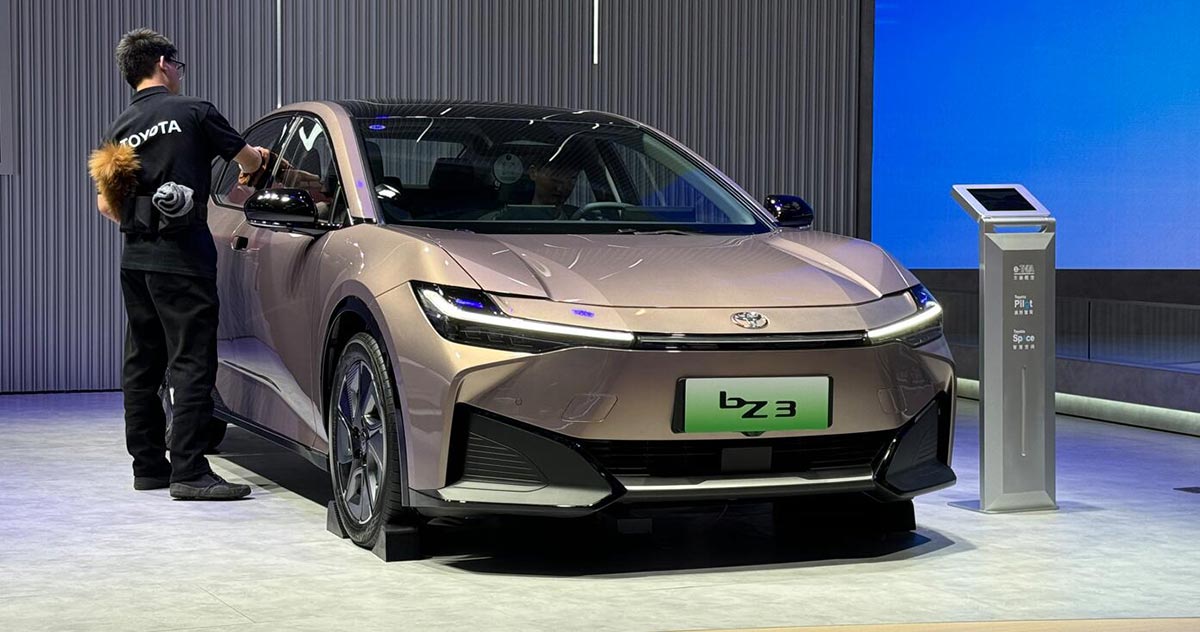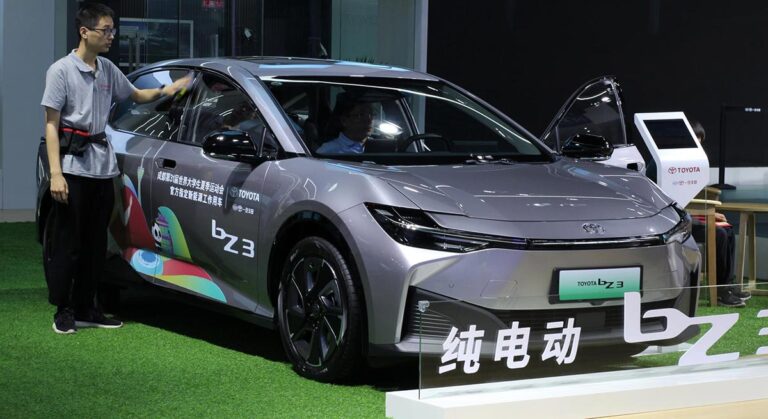One of the key reasons why Toyota is leaning towards adopting BYD's DM-i technology is that it is less expensive and relatively mature, according to local media.

(Image credit: CnEVPost)
Japanese auto giant Toyota's joint venture in China has plans to introduce plug-in hybrid electric vehicle (PHEV) models in the next two to three years, and the probability is that it will no longer use Toyota's original Hybrid model, but may adopt BYD's DM-i technology, local media Caijing reported today.
Looking at future product plans, there will be about two or three Toyota models that will use DM-i technology, according to the report.
However, there is no further information on whether all of these products will be launched as planned, the report noted.
“What is certain is that even with BYD's DM-i technology, Toyota will definitely make new polishing and tuning, and the final driving experience will be different,” the report quoted an anonymous source from Toyota as saying.
That doesn't seem to be all there is to Toyota's PHEV plans, and more of the mystery may not be revealed until the end of this month when Toyota hosts a launch event for its electrification technology in Japan, the report said.
Toyota will then describe how it will make a push into PHEVs, while a landmark small super-engine may be announced, the report said, citing a person familiar with the matter.
Toyota first tested PHEVs in China earlier than the vast majority of local Chinese brands, but it has been unable to find a balance between the dual-engine system and the market, as well as a lower cost advantage, the report noted.
Under the pressure of price wars, cost is an important factor for Toyota to consider.
One of the keys to Toyota's preference for BYD's DM-i technology is its lower cost and relative maturity, Caijing said, citing a person familiar with the matter.
In China, Toyota is still in a period of adjustment, but that doesn't stop it from recognizing the situation, the report noted, adding that for foreign brands, it's the ones that transform faster that are likely to stay in China.
BYD launched its DM (Dual Mode) hybrid technology platform in 2008 and introduced the fourth generation of the DM platform in 2021, dividing the technology into the more performance-oriented DM-p and the more energy-consumption-oriented DM-i.
The new energy vehicle (NEV) maker will launch its fifth-generation DM hybrid technology in May, with low charge fuel consumption dropping to 2.9 liters per 100 kilometers and a vehicle range of up to 2,000 kilometers on a full tank of fuel and full charge, its chairman and president Wang Chuanfu said at an investor conference in late March.
It's worth noting that BYD has a strong partnership with Toyota.
Toyota and BYD announced on April 2, 2021, that their joint venture, BYD Toyota Electric Vehicle Technology Co Ltd, was officially established. The joint venture is located in Shenzhen and is owned 50 percent by Toyota and 50 percent by BYD.
The main role of this joint venture will be the development of pure electric vehicles, with future new models expected to be sold in Toyota and BYD's respective channels.
On April 16, 2023, Toyota's Chinese joint venture, FAW Toyota, let the pure electric sedan bZ3 go on sale in China, powered by BYD-supplied electric motors and blade batteries, and using an in-vehicle system developed by BYD Toyota Electric Vehicle Technology.

